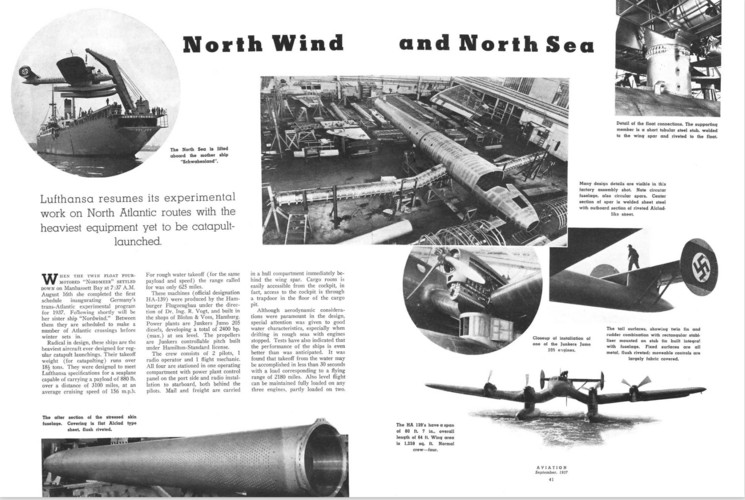Grosser Atlantik Bomber Krueuzer, Germany Cruiser laid down 1940
Displacement:
6,516 t light; 6,946 t standard; 7,200 t normal; 7,403 t full load
Dimensions: Length overall / water x beam x draught
656.18 ft / 600.39 ft x 72.18 ft x 26.25 ft (normal load)
200.00 m / 183.00 m x 22.00 m x 8.00 m
Armament:
12 - 7.99" / 203 mm guns (9 mounts), 255.24lbs / 115.78kg shells, 1940 Model
Breech loading guns in Coles/Ericsson turrets
on centreline ends, majority forward
Main guns limited to end-on fire
8 - 4.13" / 105 mm guns in single mounts, 35.32lbs / 16.02kg shells, 1940 Model
Dual purpose guns in deck mounts with hoists
on side, all amidships
8 - 1.46" / 37.0 mm guns in single mounts, 1.55lbs / 0.70kg shells, 1940 Model
Anti-aircraft guns in deck mounts with hoists
on side, evenly spread
8 - 0.79" / 20.0 mm guns (2x4 guns), 0.24lbs / 0.11kg shells, 1940 Model
Machine guns in deck mounts with hoists
on side, evenly spread
Weight of broadside 3,360 lbs / 1,524 kg
Shells per gun, main battery: 150
6 - 21.0" / 533 mm above water torpedoes
Machinery:
Oil fired boilers, steam turbines plus diesel motors,
Hydraulic drive, 4 shafts, 120,985 shp / 90,255 Kw = 38.00 kts
Range 5,500nm at 9.50 kts
Bunker at max displacement = 457 tons
Complement:
390 - 508
Cost:
£6.202 million / $24.809 million
Distribution of weights at normal displacement:
Armament: 420 tons, 5.8 %
Machinery: 3,235 tons, 44.9 %
Hull, fittings & equipment: 2,861 tons, 39.7 %
Fuel, ammunition & stores: 684 tons, 9.5 %
Miscellaneous weights: 0 tons, 0.0 %
Overall survivability and seakeeping ability:
Survivability (Non-critical penetrating hits needed to sink ship):
-68 lbs / -31 Kg = -0.3 x 8.0 " / 203 mm shells or NaN torpedoes
Stability (Unstable if below 1.00): 0.52
Metacentric height 0.1 ft / 0.0 m
Roll period: 84.2 seconds
Steadiness - As gun platform (Average = 50 %): 54 %
- Recoil effect (Restricted arc if above 1.00): 1.04
Seaboat quality (Average = 1.00): 1.08
Hull form characteristics:
Hull has rise forward of midbreak
Block coefficient: 0.222
Length to Beam Ratio: 8.32 : 1
'Natural speed' for length: 24.50 kts
Power going to wave formation at top speed: 52 %
Trim (Max stability = 0, Max steadiness = 100): 50
Bow angle (Positive = bow angles forward): 64.20 degrees
Stern overhang: 0.00 ft / 0.00 m
Freeboard (% = measuring location as a percentage of overall length):
- Stem: 26.97 ft / 8.22 m
- Forecastle (20 %): 19.69 ft / 6.00 m
- Mid (50 %): 18.37 ft / 5.60 m (17.16 ft / 5.23 m aft of break)
- Quarterdeck (15 %): 17.16 ft / 5.23 m
- Stern: 17.16 ft / 5.23 m
- Average freeboard: 18.81 ft / 5.73 m
Ship space, strength and comments:
Space - Hull below water (magazines/engines, low = better): 189.5 %
- Above water (accommodation/working, high = better): -213.0 %
Waterplane Area: -26,751 Square feet or -2,485 Square metres
Displacement factor (Displacement / loading): 73 %
Structure weight / hull surface area: 199 lbs/sq ft or 971 Kg/sq metre
Hull strength (Relative):
- Cross-sectional: 1.32
- Longitudinal: 1.56
- Overall: 1.34
Caution: Poor stability - excessive risk of capsizing
Hull space for machinery, storage, compartmentation is cramped
Room for accommodation and workspaces is extremely poor




